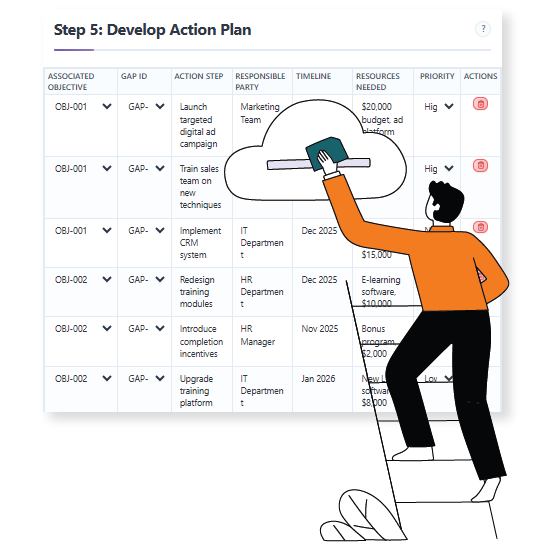Now Reading: Uncovering the ‘Why’: Using the 5 Whys Technique in Gap Analysis
-
01
Uncovering the ‘Why’: Using the 5 Whys Technique in Gap Analysis
Uncovering the ‘Why’: Using the 5 Whys Technique in Gap Analysis
The Power of Simple Inquiry
The “5 Whys” is a deceptively simple but highly effective problem-solving technique used to get to the root cause of a problem. In a gap analysis, it can be the critical next step after identifying a performance gap. Instead of just noting the gap exists, you repeatedly ask “why?” to peel back layers of symptoms until you uncover the foundational reason for the problem.

For example, a gap might be “our sales are down.” Asking “why?” could lead to “our website is too slow,” which then leads to “why is it too slow?” and so on, until you reach a core issue like “our server infrastructure is outdated.” The name “5 Whys” is a guideline, not a hard-and-fast rule; you may need to ask fewer or more than five times to reach the root cause.
Moving Beyond the Surface
By integrating the 5 Whys into the gap analysis process, you move beyond surface-level observations and avoid a common pitfall of strategic planning: treating the symptom, not the disease.

This method prevents you from applying temporary fixes that fail to address the underlying issue. For example, if your sales are down, you could simply throw money at a new marketing campaign.
However, if the root cause is actually an outdated server, the marketing campaign won’t solve the core problem. A deeper understanding of the root cause ensures that your action plan is not only effective but also durable, preventing the same issues from recurring in the future.
It allows for a more targeted and resource-efficient solution. SWOT vs. Gap Analysis: What’s the Difference?
Practical Application and Cross-Functional Value
The strength of the 5 Whys lies in its simplicity and its ability to be applied across various departments and functions. It encourages teams to think critically and collaboratively about a problem, fostering a culture of continuous improvement. In a product development team, for instance, a bug in the software might be a symptom. Asking “why” can reveal a flaw in the testing process, which in turn might point to a lack of proper training for the quality assurance team.
This step-by-step inquiry brings to light the systemic issues that would otherwise remain hidden. When a gap analysis is conducted with the 5 Whys, the resulting insights are not just about a specific metric, but about the health of the entire system.

